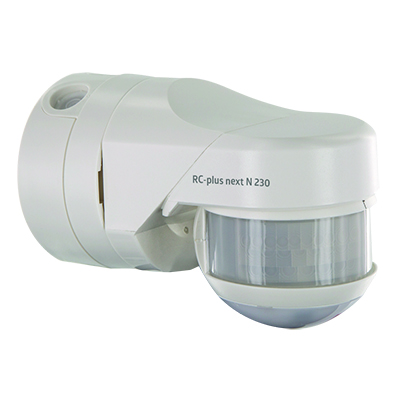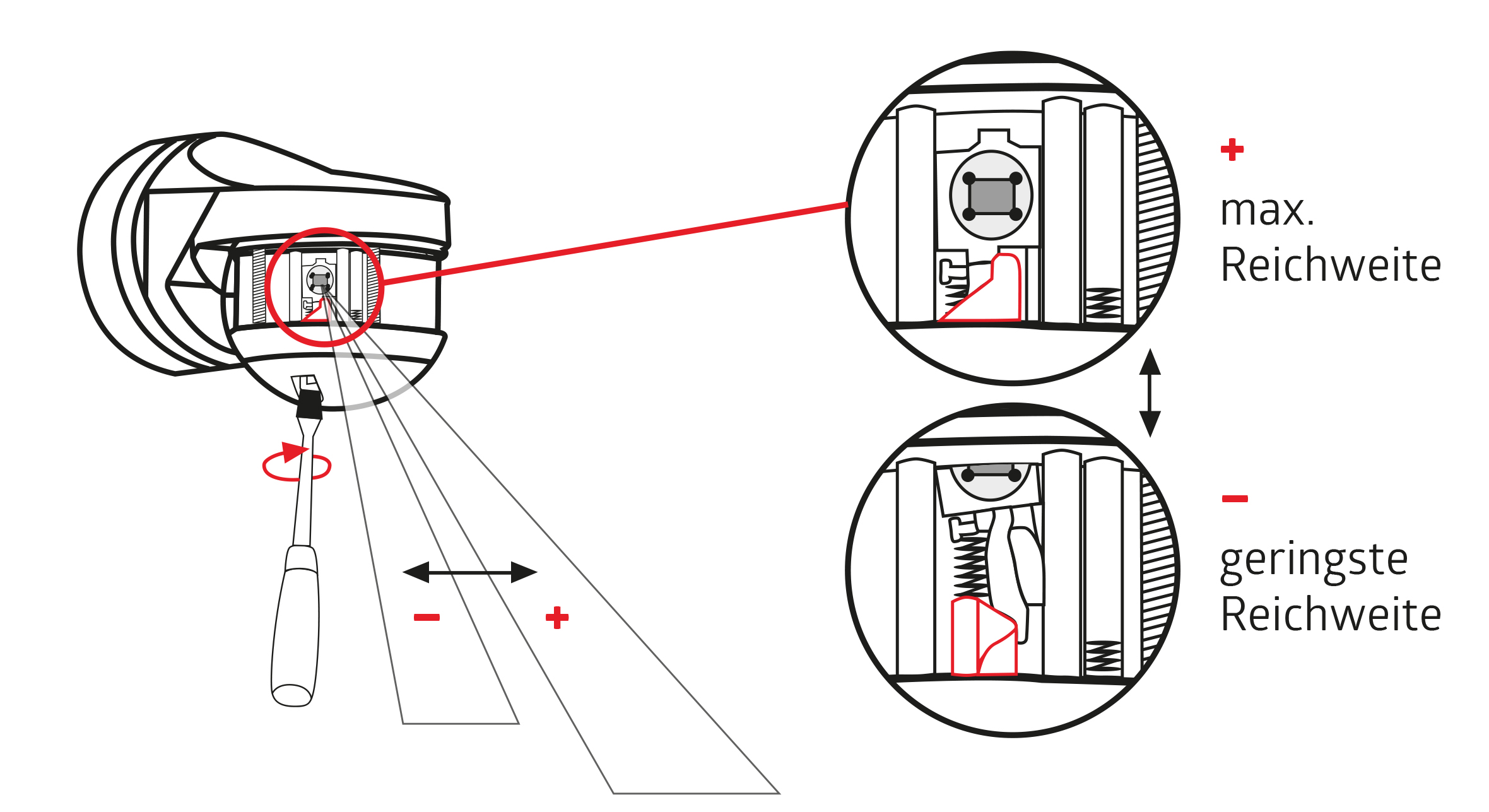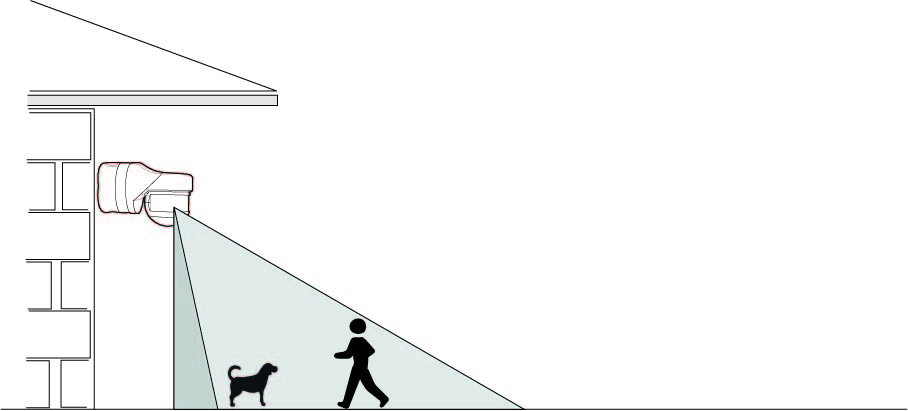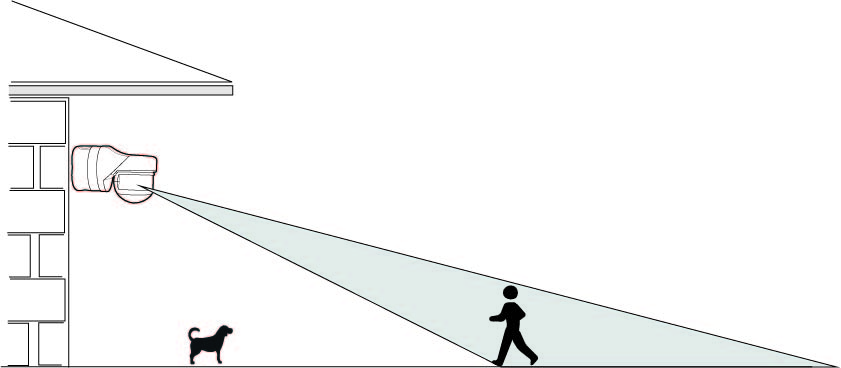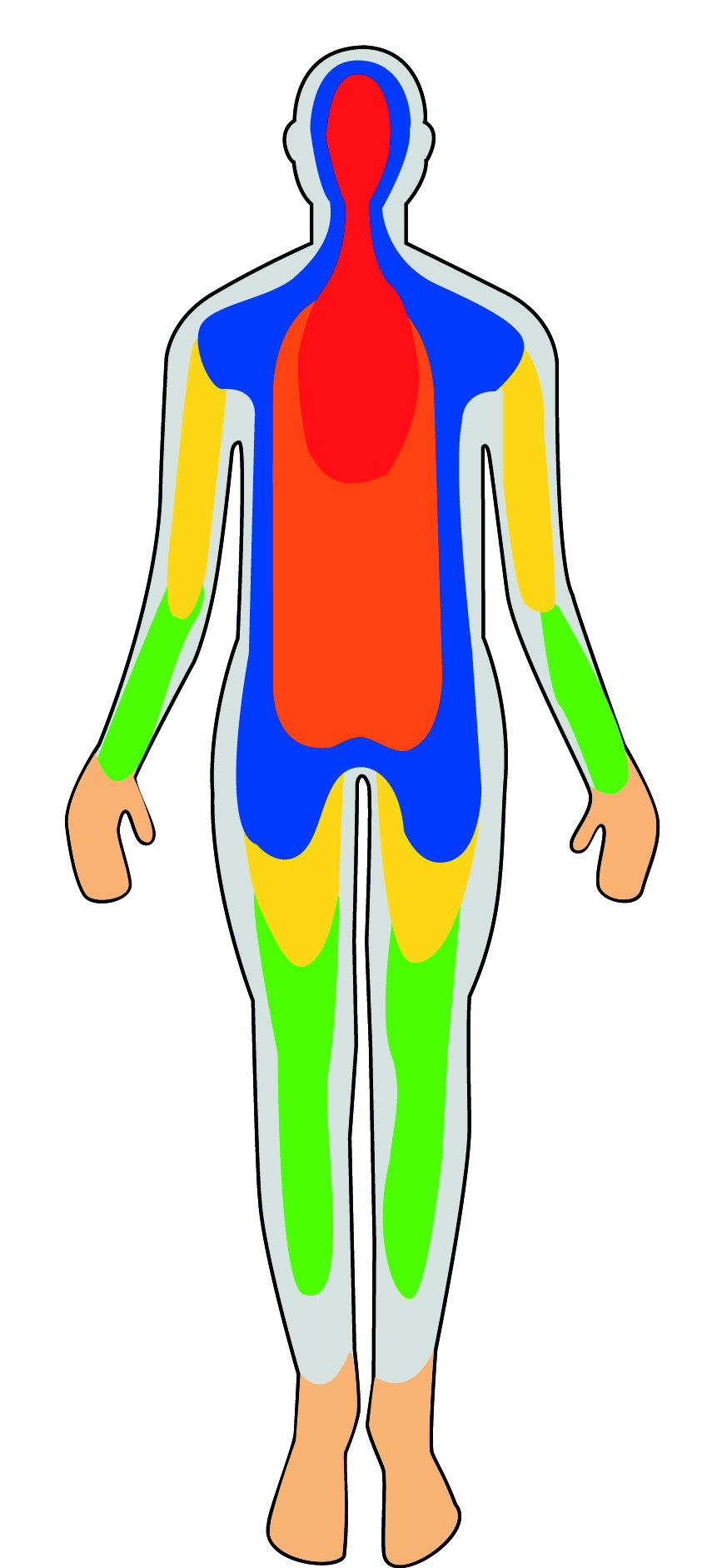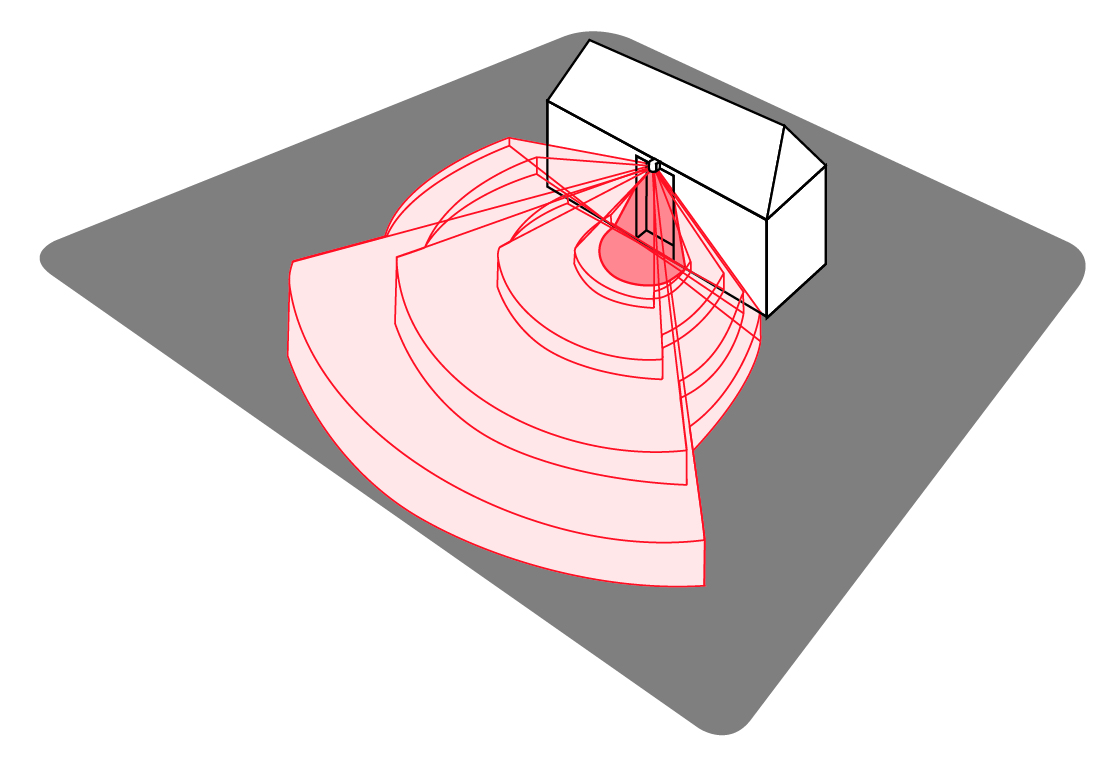Motion detectors are now used in many places, in or on industrial or office buildings as well as private residential buildings. When used outdoors, faulty switching may occur more often. We will show you how to avoid these.
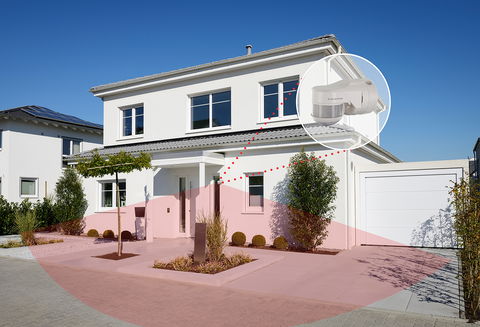
It is convenient if the entrance area is automatically illuminated in the dark as soon as a movement is detected by the motion detector. The key and the lock are quickly found. However, it becomes annoying if the automatic lighting control does not work as intended, i.e. the light is either not switched on despite movement or the light is switched on for no apparent reason. The more often this happens, the more annoying it is felt. There are many reasons for such faulty switching and solutions to these problems.
One of the most common reasons for missing switching operations is the lack of “visual contact” of the detector with the heat source. However, this is absolutely necessary: In outdoor areas, motion detectors are almost exclusively fitted with passive infrared sensors (PIR). These sensors react to heat changes that occur when living beings move (see info box). This also means that the motion detectors cannot detect movement through obstacles such as walls or trees. The detector therefore needs a “clear view” over the entire area it is to detect.
The first step to avoid faulty switching is the careful selection of the appropriate outdoor motion detector. The manufacturers specify the detection angles and detection ranges for their products. This enables the installer to check which detector best matches the area they are to cover. Here, the dimensions should not be too generous, as otherwise faulty switching in the peripheral areas can occur. The detectors can be further optimised by aligning and programming them to the desired areas.
For technical reasons, PIR motion detectors detect movements that run at right angles to them earlier and more reliably than movements that approach them directly. For example, if the detector is installed frontally on a long driveway, the light may not be switched on until a person has already covered a long distance on the driveway. In order to prevent the motion detector from switching too late, it is therefore important to ensure that the detector is installed laterally to the frequent passageways.
The detector should be mounted protected from rain and wind, i.e. optimally under a roof soffit. Because even rain, when it runs down the lens, can trigger a faulty switching due to its temperature difference to the detector. Direct sunlight (UV light) also causes the housing material to age faster. The lens can become brittle or the material can discolour. The technical data specified by the manufacturer only apply if the detector is installed correctly. If a detector is mounted upside down, for example, contrary to the mounting instructions, water can penetrate and cause damage to the detector (IP value).
If the detector is mounted in the right place and has a “clear view” of the entire area, nothing stands in the way of motion detection. But what happens if the light is switched on without a person being in the detection zone?
The lighting switched by the motion detector can be a reason for incorrect switching. Depending on the type of lighting used (LED, halogen etc.), the light source itself produces heat. When the lighting is switched off, the fitting cools down. This heat difference can in turn be interpreted by the detector as movement and the lighting can be switched on again. For this reason, the floodlight should always be installed above the detector, i.e. outside the detection zone.
If the lights are correctly mounted, the alignment of the motion detector plays a decisive role. Outdoor detectors usually have a very large detection range. If, for example, a street runs along the edge of the detection range, people and cars will cause faulty switching. The correct alignment of the detector can help here. High-quality products have a movable ball head that can be turned both horizontally and vertically.
If, for example, the mounting location cannot be selected optimally because of the supply line, this can be compensated for by the alignment of the ball head. Many devices have a test mode in which the detector switches the light on and off continuously as soon as there is movement in the detection zone. In this mode, it is not necessary to constantly wait for the elapse of the follow-up time to align the detector.
If the outdoor motion detector is optimally aligned, further sources of faulty switching can occur. An example: Plants do not emit any heat, so moving trees and shrubs are not detected. However, if there is a heat source behind the plant, e.g. a wall heated by the sun, a detector detects any movement of the plant caused by a gust of wind.
In this case, blinds can be used which are attached to the lens of the detector. The blinds are impermeable to IR radiation and thus certain parts of the detection zone are blanked out. However, this also means that people walking in front of the plant, for example, are no longer recognised.
Another reason for unwanted switching is animals passing through the detection zone. Mammals and birds generally have a similar body temperature to people. Movements of cats and dogs are detected like human movements and cause the light to be switched on. The cause is therefore the same in both cases: the movement of a (warm) creature.
Such “erroneous” switching can hardly be avoided. However, it is possible to exclude small creatures from detection by clever alignment of the detection range. As already mentioned, the IR rays must reach the sensors in order to detect a movement. As the radiation decreases over the distance, the sensor can better detect a movement in 2 m proximity than in 20 m distance. The detection range depends on how much heat is radiated. Small animals, such as cats, radiate less heat than humans.
With some detectors, the sensitivity of the sensors can be variably adjusted. This setting determines the amount of heat from which the sensor is to respond. Smaller amounts of heat, e.g. those of a cat, Can therefore be blanked out. But already by the radiation of a larger dog the light can be switched on “erroneously” by the detector. However, if the sensitivity is further reduced, there is a risk that small children‘s movements will no longer be detected.
Another way to reduce “false” switching caused by animals is to hide the lower detection ranges. Many outdoor motion detectors have a so-called anti-creep zone. This covers the area directly below the detector that is not covered by the front sensors. Cats often stray past house walls and thereby cause the light to be switched. For good motion detectors the anti-creep zone can be deactivated individually. It should be borne in mind that people can then sneak past the detector along the wall without being detected. Complete surveillance of the outside area is no longer assured.
Some outdoor motion detectors additionally offer the possibility to adjust the sensitivity ranges for each sensor by screwdriver or remote control. If the sensors are turned upwards, “dead zones” are created just above the ground where no movement is detected. In this way small heat sources such as small animals can be excluded from detection. However, the detection range is thereby shifted to the distance. It must therefore be taken into account whether there is a road where people and cars can cause faulty switching.
Conclusion
Faulty switching can have many reasons. The correct installation of the appropriate detector already eliminates a large number of error sources. Most sources of interference can be eliminated by aligning the sensor head and limiting the detection range with blinds or by adjusting the sensors. However, it is always necessary to carefully weigh up the interference caused by faulty switching and the required monitored area, because in the fine tuning of a detector, the suppression of interference sources usually means a limitation / reduction of the detection range.
Passive infrared sensors
Infrared radiation lies in the electromagnetic spectrum between visible light and microwaves. Infrared radiation is primarily heat radiation and is generated by the movement of atoms and molecules in an object. This means that every object with a temperature above absolute zero, i.e. even an ice cube, radiates in the infrared range. The higher the temperature, the more the atoms and molecules move and the more infrared radiation they produce.
The infrared radiation generated by living beings is not homogeneous, which becomes clearly visible when an infrared camera is used. Different parts of the body radiate to different degrees, the mouth, for example, is significantly warmer than the fingers. Thus, the infrared radiation emanating from the mouth is correspondingly stronger than the radiation emanating from the fingers.
Passive infrared sensors (PIR sensors) enable the use of infrared radiation for motion detection, as they respond optimally to the heat radiation of a human or animal. Passive infrared means that the sensors do not emit radiation, but only receive it. The detector then evaluates the signals from the sensors and switches on the light accordingly.
